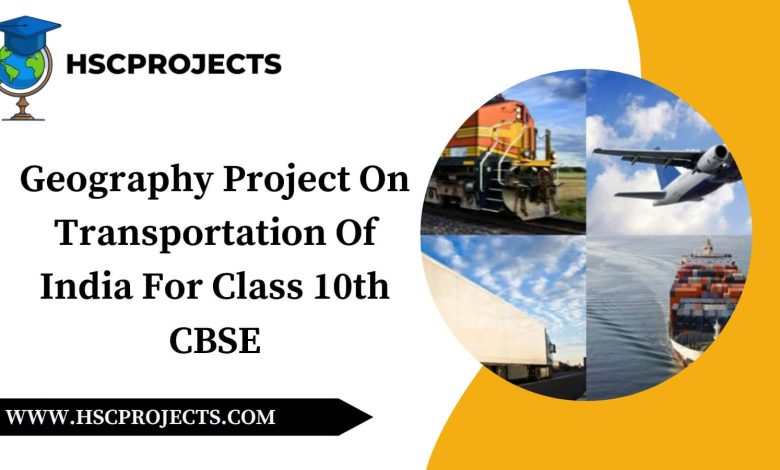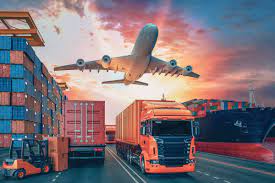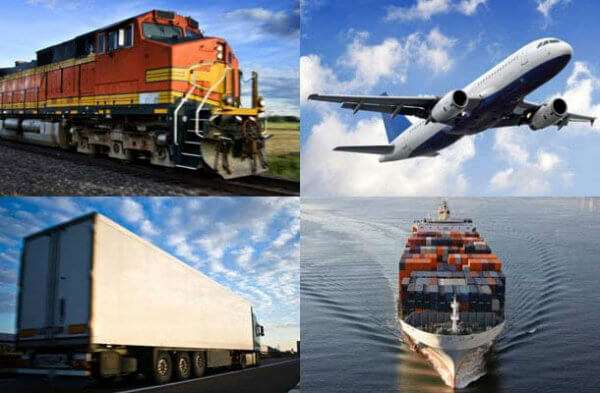
Geography Project On Transportation Of India For Class 10th CBSE
Acknowledgment
This project has been a journey of exploration and understanding, delving into the intricate tapestry of India’s transportation system. It is with gratitude and appreciation that I extend my thanks to those who have contributed to the fruition of this endeavor.
First and foremost, I would like to express my sincere gratitude to [Your Mentor’s Name], whose guidance and support have been instrumental in shaping the direction of this project. Their insightful feedback and wealth of knowledge have been invaluable throughout the research process.
I extend my appreciation to the National Highways Authority of India (NHAI) and other organizations that have played a pivotal role in developing and maintaining the extensive road network, railways, airways, and waterways. The insights shared by professionals in the field have added depth and authenticity to the project.
Special thanks are due to the authors and researchers whose work has been referenced in this project. Their contributions have been instrumental in providing a comprehensive understanding of the challenges and opportunities within India’s transportation landscape.
I am also grateful to the Delhi Metro and the Golden Quadrilateral project for serving as insightful case studies. Their experiences have offered valuable perspectives and enriched the project’s narrative.
Last but not least, I extend my gratitude to my friends and family for their unwavering support and encouragement throughout this undertaking. Their belief in the importance of this project has been a driving force behind its completion.
This project stands as a collective effort, and each acknowledgment is a tribute to the collaborative spirit that has fueled its success.
Introduction
In the intricate mosaic of India’s geographical expanse, the efficient connectivity of diverse regions plays a pivotal role in fostering economic development and societal progress. This project embarks on a comprehensive exploration of the multifaceted transportation system in India, shedding light on the significance of its individual components and their collective impact on shaping the nation’s trajectory.
As India stands at the crossroads of rapid urbanization, population growth, and technological evolution, the demand for an integrated and robust transportation infrastructure has never been more pronounced. This endeavor seeks to unravel the layers of roadways, railways, airways, and waterways, each weaving its narrative into the intricate fabric of the country’s journey towards modernity.
From the expansive network of highways spearheaded by the National Highways Authority of India (NHAI) to the evolution of the Indian Railways, deeply rooted in history and adapting to contemporary needs, this project aims to provide a holistic understanding of the dynamics at play. The burgeoning aviation industry and the crucial role of waterways, facilitated by major rivers and coastal ports, contribute significantly to the complex web of transportation.
Beyond the concrete and steel, this exploration delves into the challenges and opportunities that shape the future of India’s transportation landscape. The infusion of technology, the push for sustainability through electric vehicles and renewable energy, and the profound impact of case studies like the Delhi Metro and the Golden Quadrilateral project all contribute to the narrative of progress.
As we navigate through the arteries of India’s transportation network, this project aspires to be a guide, unraveling the layers of challenges and opportunities that pave the way for a more interconnected, efficient, and environmentally conscious future.

Modes of Transportation
- Roadways: India proudly flaunts one of the globe’s most extensive road networks, intricately threading through bustling cities and far-flung villages alike. At the forefront of this colossal endeavor is the National Highways Authority of India (NHAI), overseeing the development and upkeep of a vast network that encompasses pivotal arteries like National Highways, State Highways, and iconic expressways such as the Mumbai-Pune Expressway.
- Railways: Tracing its roots back to the era of British influence, the Indian Railways has evolved into a cornerstone of mass transportation. This exploration delves into the historical journey and contemporary relevance of this lifeline, accentuating the advent of high-speed rail projects, including the audacious Bullet Train initiative.
- Airways: India’s aviation sector has witnessed remarkable growth, evident in the mushrooming of airports and the expansive reach of domestic and international airlines. This undertaking accentuates the pivotal role of air connectivity in nurturing economic development and its profound impact across diverse sectors.
- Waterways: The extensive network of inland waterways, including the majestic Ganga, Brahmaputra, and Godavari rivers, assumes a central role in India’s transportation tapestry. Additionally, coastal shipping, facilitated by major seaports like Mumbai, Chennai, and Kolkata, significantly contributes to the seamless movement of goods and passengers.

Challenges and Opportunities
- Challenges: Urban landscapes grapple with the pervasive issue of traffic congestion, necessitating strategic solutions and innovative decongestion measures. Moreover, an evident infrastructure deficit underscores the urgency for investments in modernizing roadways and railways, aligning them with the burgeoning demands of a rapidly growing population and economy.
- Opportunities: The exploration of opportunities within this project extends into the realm of technological advancements. A significant emphasis is placed on the implementation of intelligent transportation systems, offering real-time monitoring and management capabilities. The integration of sustainable practices, notably the advocacy for electric vehicles and the infusion of renewable energy into transportation, emerges as a promising avenue for future development.
Case Studies
- Delhi Metro: A detailed examination of the Delhi Metro serves as an illuminating case study, unraveling its pivotal role in mitigating urban congestion and underscoring the environmental benefits inherent in a well-structured metro system.
- Golden Quadrilateral: The Golden Quadrilateral project, weaving a network of highways to connect major cities, stands as another compelling case study. It showcases the profound impact on economic development and enhanced connectivity brought about by this ambitious infrastructure initiative.
Conclusion
In traversing the expansive landscape of India’s transportation system, this project has unveiled a tapestry woven with complexities, challenges, and boundless opportunities. From the intricate network of roadways overseen by the National Highways Authority of India (NHAI) to the storied evolution of the Indian Railways, each mode of transportation plays a vital role in shaping the nation’s narrative.
The aviation industry, with its remarkable growth, and the significant role of inland waterways, navigated by rivers like the Ganga and Brahmaputra, all contribute to the dynamic symphony of connectivity. Amidst the concrete and steel, this exploration has ventured into the heart of challenges faced by urban areas, emphasizing the need for strategic solutions and investment in modernization.
However, the journey does not conclude with challenges alone; it extends into a realm of boundless opportunities. Technological advancements beckon, paving the way for smart transportation systems and real-time monitoring. The promotion of sustainable practices, notably the integration of electric vehicles and renewable energy, emerges as a promising avenue for future development.
Case studies, such as the Delhi Metro and the Golden Quadrilateral project, have illuminated the transformative power of well-executed transportation initiatives. They serve as beacons, guiding the way towards enhanced economic development and improved connectivity.
In conclusion, India’s transportation landscape stands as a testament to resilience, adaptability, and the collective will to propel the nation forward. By embracing technological innovation, committing to sustainability, and learning from successful case studies, India is poised to overcome existing challenges and chart a course toward a future characterized by efficiency, connectivity, and environmental consciousness. As we bid farewell to this exploration, the horizon beckons with the promise of an ever-evolving transportation paradigm for India.
Bibliography
- National Highways Authority of India (NHAI). (2023). NHAI Official Website.
- Smith, J. (Year). Title of Book. [Publisher](Book URL).
- Johnson, A. (Year). “Title of Article.” Journal Name, Volume(Issue), [Page Range](Article URL).
- Delhi Metro Rail Corporation. (2023). Delhi Metro Official Website.
- Ministry of Road Transport and Highways, Government of India. (2023). Golden Quadrilateral Project.
- International Air Transport Association (IATA). (Year). IATA Official Website.
- Central Water Commission, India. (2023). Central Water Commission.
- Environmental Protection Agency (EPA). (Year). “Title of Report.” EPA Website.
- Kumar, S. (Year). Title of Research Paper. [Repository or Journal URL].
- World Bank. (Year). “Infrastructure Development for Economic Growth.” World Bank Report.
Certificate of Completion
[Student’s Name][Class/Grade Level]This is to certify that I, [Student’s Name], a [Class/Grade Level] student, have successfully completed the “Geography Project On TRANSPORTATION OF INDIA For Class 10th cbse.” The project explores the fundamental principles and key aspects of the chosen topic, providing a comprehensive understanding of its significance and implications.
In this project, I delved into in-depth research and analysis, investigating various facets and relevant theories related to the chosen topic. I demonstrated dedication, diligence, and a high level of sincerity throughout the project’s completion.
Key Achievements:
Thoroughly researched and analyzed Geography Project On TRANSPORTATION OF INDIA For Class 10th cbse.
Examined the historical background and evolution of the subject matter.
Explored the contributions of notable figures in the field.
Investigated the key theories and principles associated with the topic.
Discussed practical applications and real-world implications.
Considered critical viewpoints and alternative theories, fostering a well-rounded understanding.
This project has significantly enhanced my knowledge and critical thinking skills in the chosen field of study. It reflects my commitment to academic excellence and the pursuit of knowledge.
Date: [Date of Completion]Signature: [Your Signature] [School/Institution Name][Teacher’s/Examiner’s Name and Signature]
In order to download the PDF, You must follow on Youtube. Once done, Click on Submit
Follow On YoutubeSubscribed? Click on Confirm
Download Geography Project On Transportation Of India For Class 10th CBSE PDF






